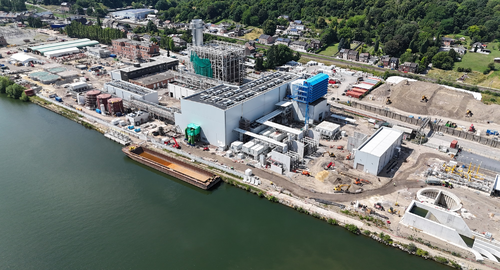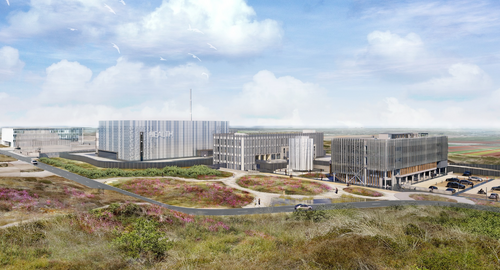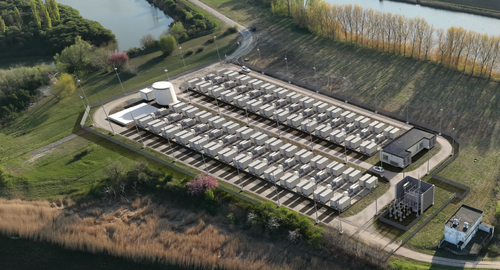The iconic Snowy Mountain hydroelectric and irrigation scheme, originally built from 1949 through 1974, is Australia's biggest renewable energy project. Snowy 2.0, the highly technical extension of this project led by public company Snowy Hydro Limited, has been in full swing since 2019. As design consortium leader, our experts are finding innovative ways to tackle this extremely large and uniquely challenging project.
A project of colossal proportions
The Snowy 2.0 expansion involves the construction of a 2,000-MW underground pumped-storage hydroelectric power plant that will link two existing water reservoirs. The project features 27 km of tunnels – waterways, auxiliary and access tunnels - and an underground power station measuring 22 m wide, 50 m high, 250 m long and located beneath around 750 m of solid rock.
 |
| Snowy 2.0 expansion: A cross-section of the 27-km underground tunnel and power station (not to scale) |
The deep complexities of Snowy 2.0
 |
|
“The underground caverns – the machine hall (main) and the transformer hall – are extremely complex from a technical perspective because of their size and the in-situ constraints which are comparable to the rock strength,” explains Patrick Lignier, Technical Director at Tractebel. “The constraints released by the excavation work are redistributed around the caverns, resulting in local weakening of the rock – plasticization – and a distortion towards the cavern interior.
|
The infrastructure is kept stable by a series of passive anchors – 23,000 in total - injected along the entire length, and projected fibre-reinforced concrete which behaves like a skin over the cavern wall. Significant precautions have been taken to ensure that the covering is built to last: the anchors are doubly protected against corrosion,” says Lignier.
Another major challenge is the fact that there is no technical reference framework or sizing standard for this type of infrastructure, which is under a heavy load. World-renowned experts and other specialists engaged in intense technical discussions to develop a design that will ensure the infrastructure has a service life of at least 150 years. These discussions were based on complex three-dimensional calculations modelling all of the underground infrastructure, the main geological discontinuities, the excavation phases and the installation of the anchors.
Key figures
Main hall: Height: 50 m - Width: 32 m - Length: 250 m - Anchors: 15,000
Transformer cavern: Height: 46 m - Width: 20 m - Length: 220 m - Anchors: 8,000
| 3D Model: Global stability |
2D model: Rock support design |
Unwedge Model: Block Stability |
BIM model |
Tractebel in close collaboration with stakeholders
As engineering consortium lead, our hydropower experts are working closely with partners Lombardi (tunnels) and Coffey (surface infrastructures), as well as contracting authority Snowy Hydro Limited, Engineering, Procurement and Construction (EPC) contractor Future Generation Joint Venture consortium (WeBuild, Clough, Lane), and equipment manufacturer Voith.
1.500+ drawings
The preliminary design (Level 1) was delivered and approved in 2021. The detailed design (Level 2) is currently underway and will be submitted in 2022. The detailed design, the basis for the construction works, requires an extremely high level of detail, and generates a significant quantity of calculations and plans. Altogether, more than 1,500 plans will be delivered, and hundreds of interfaces will be resolved with the equipment manufacturer.
2021 saw intense work carried out and operations rigorously coordinated with equipment manufacturer Voith, for which the project team went to great lengths to collect input data. Processing the critical interfaces made it possible to define the baseline of the detailed design for the civil engineering of the power station complex.
A major technical accomplishment
The Snowy 2.0 project will be a major technical milestone – both in terms of its size and its level of technical difficulty. It is Australia's largest renewable energy project, and one of biggest pumped-storage projects in the world. It has also been an opportunity for Tractebel to bolster its position as a global hydropower leader in engineering services delivered to contractors.
Watch SNOWY HYDRO’s video to find out more about Snowy 2.0
https://www.youtube.com/watch?v=TJOFiN8Nw5o&list=PLLrLa65bPqJFUlvwxg7H9mcXmjffOU_sH







